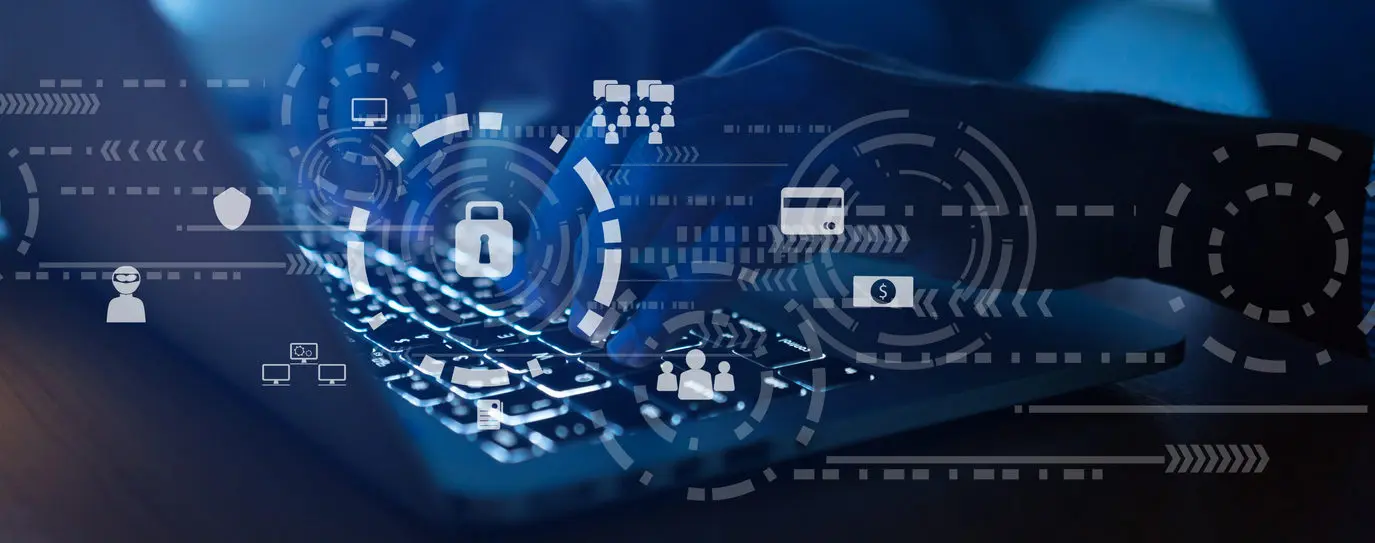It’s a safe bet to say that your organization is concerned about cybersecurity. Your IT team is likely well-staffed and has implemented the latest security tools, and trained non-IT staff on the ills that befall those who click on external links and attachments without checking. Your organization has trusted but verified, perhaps verified then trusted. But is the “trust but verify” standard enough? Are you really operating as safely as you could, or rather, should be in today’s cyber climate?
The answer is no. Let us explain.
A Tale of Two Strategies
I’d like to take a moment to discuss two of the more prominent schools of practice in IT security– “trust but verify” and “zero trust” (or “trust no one”). To illustrate these examples, let’s draw upon a well-known bastion of high-stakes security—the White House.
“Trust but verify” focuses on a strong external defense through establishing a solid perimeter. The White House employs precisely that—the iconic iron fence, a no-fly-zone, bullet-proof windows (which cannot be opened), monitored alarm systems, and of course, the Secret Service detail. Your organization’s IT security architecture has likely built the equivalent of the White House perimeter, using firewalls, proxy gateways, system alerts, password requirements and vendor training. (Perhaps you also have a no-fly zone!) In theory and perhaps in practice, any external hackers are going to have a rough time accessing your organization’s data or compromising your servers or mainframe.
Reading this, “trust but verify” sounds sufficient on paper. However, the complacency zone is the danger zone, and this is where the “zero trust” concept comes in. You have a strong exterior, but what about your organization’s interior? Like the White House, your most valuable resource is also your biggest risk: people. Which takes us to our second concept, that of “zero trust” or “trust no one.”
Let’s go back to 1600 Pennsylvania Avenue. Once you (lawfully) gain access, you’ll find scores of people milling about, including legislative and household staff, guests from Capitol Hill, tourists, etc. While everyone has gone through a standard security check, ranging from a metal detector to an FBI background check, the Secret Service cannot afford the standard “trust but verify” approach, and must rely on “zero trust” as a consistent, elevated means of security.
Zero Trust is, at its core, an enhanced level of managing access, with hyper-awareness of who is on, and has access to, your network and data. For instance, while a White House intern or assistant has been vetted at hiring, and perhaps passed through a couple of checkpoints for that workday, does it make sense for that intern or assistant to have unfettered access to the Situation Room, or the Residence? Should a tourist be able to simply walk into the Oval Office? And would just anyone have access to the President? Of course not. Vetting should not equal full access.
Back to your organization. Those who have access to systems, including company email and other communication tools are likely your staff, or trusted third parties, such as vendors and contractors. However, you’re not likely to hand over, say, a master list of security passwords to the Marketing team if they ask. Nor would you give a list of the home addresses and contact information of staff to a software vendor. Sure, you trust these folks, but do they need this level of access to sensitive information? We’ll go out on a limb and say no.
Essentially, trust but verify relies on a strong defense, vetting then trusting people and systems. Zero trust is an internal strategy, focusing on hypervigilance around not only system security compliance, but access. Here at DataMotion, we abide by both.
Read More
Case Study: Health Insurance Technology Startup
eBook: The Guide to Protecting Data in Motion
A Service for Secret and Sensitive Information
In the United States alone, statistics reflect as many as 2,500 security breaches daily, with insider activity accounting for up to 58% of this number. (1) An internal breach has various causes, including BYOD practices, malicious activity, carelessness, or from plain, old-fashioned ignorance or human error. Additionally, 52% of employees surveyed do not feel that sharing login credentials poses a security risk to their employer. (2) Whatever the cause, a zero-trust strategy greatly reduces your organization’s chances of an access-related security lapse.
Like the Secret Service, DataMotion employs the “zero trust” approach (albeit, for us it is sans earpieces and guns—for some of our customers, it’s both). We provide a strong, multi-layered, security-and-compliance-centered strategy for your organization’s secure exchange —here are a few examples of how we apply this concept to keep your data safe:
Zero Visibility We facilitate your secure exchanges, but our team cannot view your messages, data or documents. Ever. They are seen by the sender and the intended recipient; after that, your organization’s protocols come into effect.
Limited Physical Access Only those employed by the data center may access servers running our systems. Any third parties that require access for critical functions are authorized and under contract by the data center.
Key Management The DataMotion system automatically handles encryption key management, creating a secure, easy to use system in which the encryption seeds are unique to each message and megabyte (MB) of document exchanged between users.
Governed Data Access All actions are validated by the data layer before data is accessed. Application servers have no direct access to data tables, and have to ask “may I please” to interact with the encrypted data store. The type and scope of every request must be approved by the data layer, producing a “need to know” environment that greatly reduces the attack surface.
Separation of Duties Data breaches can occur when there is overlap between access to source code and production systems. At DataMotion, developers have access to the code, but not the systems, and our operations team has access to the systems, but not the code. There is no Venn diagram of access, thus greatly reducing risk.
Background Checks In addition to a series of interviews and reference checks, all DataMotion employees also undergo additional background checks when hired.
DataMotion’s zero-trust architecture is only part of protecting your organization’s data. In addition to the steps we take behind the scenes, each exchange meets your industry’s regulations and requirements, such as HIPAA, GLBA, PCI-DSS, HITECH, GDPR, PIPEDA, FINRA, FERPA, CCPA and CJIS,ensuring that your securely-sent communications are fully compliant.
While we trust no one, we are pleased to be trusted by others, with the following certifications:
- DirectTrust/EHNAC Registration Authority
- Certificate Authority, Health Information Service Provider
- ONC Health IT Modular Certification
- SOC 2 clouds
- HITRUST CSF® Certification
DataMotion’s zero trust model helps achieve all these certifications and helps you, the customer, remain compliant with many different requirements and regulations.
Zero Trust in Beast Mode: Exchanging Securely with DataMotion
When the US President travels, he’s not flying commercial, nor driven around in a standard sedan. No, this is where secure transit is employed, including Air Force One and the Beast. And secure transit just happens to be our specialty.
The presidential limousine (dubbed “the Beast”) is no ordinary car—its many security features include eight-inch-thick, armor-plated doors, Kevlar-reinforced tires, a specially-encrypted phone, and a Secret Service driver that is highly trained to be prepared for any driving condition or maneuver. Given this level of security, the President has excellent odds of travelling safely from Point A to Point B and arriving unscathed.
Your organization’s secure data and documents shouldn’t have to fly coach, nor be strapped into a 1960 sedan. DataMotion’s zero trust, security-first design is like the Beast—while we might not use Kevlar tires or armored plates, we do have the technological equivalent in our FIPS 140-2 encryption and our governed core (with need-to-know control and full activity reporting) ensuring that your data and documents in motion and at rest in our system are protected and arrive unscathed on their journey from Point A to Point B.
Security in Plain Sight
Let’s take a final jaunt back to the White House, where members of the First Family will have Secret Service agents tailing them wherever they go. If you are a teenager with a detail, chances are you’re going to try to give them the slip because let’s face it, it’s hard to blend in when you’re followed around by a bunch of serious-looking guys in suits. However, that same teenager will likely be more amenable to having their detail around if the suits are replaced by jeans, khakis and maybe a concert tee shirt. This way, the teen feels more at ease, and there are still layers of security surrounding the teen while they are in motion (or “on the move”) but blending in better.
This principle applies to DataMotion’s philosophy that security that is transparent is used. If it’s clunky or requires several additional steps, no matter how well-meaning or earnest an employee may be, bypassing security protocols might be the easiest way to quickly send documents and data, putting your organization at risk. Unobtrusive, transparent security is the way to go, enabling an employee to easily follow protocol and keep your data secure. DataMotion’s APIs can easily integrate into any workflow, offering a seamless, frictionless experience for your staff and clients, keeping people productive and data secure. By leveraging a zero trust architecture that offers a smooth experience, you have just elevated your organization’s security and productivity. We’d call that beauty and the beast.
There you have it. You’ve likely realized that the trust but verify approach, while providing a high perimeter, doesn’t do anything for your organization’s soft underbelly. We encourage you to leave your cybersecurity comfort zone, learn more about DataMotion, and about how our security-first approach can benefit your organization and clients.
Still have questions? Send us a note.
Sources
- Insider Threat Statistics on Data Breach (pilixo.com)
- Insider Threat Statistics: The seriousness of insider threats, intentional or not (isdecisions.com)




